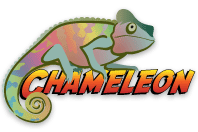Chameleon DIY Developers Guide
| Instructions for Creating a DIY Customization |
| Chameleon Themes Original CSS |
| References |
Instructions for Creating a DIY Customization
- To get started on designing a custom Chameleon theme, submit a tracker issue with the subject "Chameleon DIY Request". Indicate which of the standard themes you'd like to modify, and the name that you would like to give your new theme. You can view the standard themes in the Chameleon Theme Gallery.
- Unzip the compressed customization file that was sent to you by SASSIE technical support. This creates a folder that will contain your customization, with the same name that you chose in step 1.
- In a web browser, open the file clients/example.html (found in the customization directory that was created when you unzipped the compressed customization file). This file contains a sample shop view, shown in the standard theme that you specified as the starting point for your customization. You will use this file to see how your customizations will look.
- Open the file custom/client_files/chameleon/<directory_name>.css using any text editor. For example, if you specified "MyTheme" as your directory name, you would open custom/client_files/chameleon/MyTheme.css.
WARNING: do NOT edit any files EXCEPT the CSS file, and do NOT rename any directories! If you do this, your customization will NOT work! - Add your customizations to the file. As you make changes, go back to the web browser and reload example.html so you can see your customizations. We strongly recommend reloading example.html frequently, to make sure that your customizations are working as expected.
You can customize any of the classes on the Chameleon CSS elements page. To see the starting theme's original settings for each class, go to the Chameleon Themes Original CSS reference. - To use custom images, place the image files in custom/client_files/chameleon/<directory_name>_images (for example, custom/client_files/chameleon/MyTheme_images). Then reference the images in the CSS file with <directory_name>_images/<filename> (for example, "MyTheme_images/question_header.gif").
- When you are done editing the CSS file, create a compressed file containing the folder and all its subfolders (for example, the MyTheme folder and all its subfolders).
The Chameleon Design-It-Yourself uploader supports .gz and .zip files, but not the proprietary .zipx format. If you are using WinZip, please select the older .zip format. - Send the compressed customization file to SASSIE Support by attaching it to a tracker. In your tracker entry, make sure that you specify the label that you want to use for this customization. The label will be used in the Chameleon Configurator to select this customization.
Chameleon Themes Original CSS
The links below show the relevant CSS details of the standard Chameleon themes, and are intended to be used as a reference of each theme's original font characteristics (color, font family, size, etc.).
WARNING: Do NOT copy and paste the contents of these files into your CSS file! This GREATLY increases the chances of future compatibility problems. Instead, follow the instructions above, use this information as a reference for the original CSS settings, and enter only settings that you are actually modifying in your CSS file.
| Bank | Blue Panels | Casino |
| Clipboard | Cool Tones | Gray Green |
| Gray Panels | Home Improvement | Letterhead |
| Metrics | Paper | Restaurant - Bar |
| Restaurant - Dining | Retail | Sapphire |
| Sapphire - Dark | Warm Panels | Warm Tones |
References
Chameleon Theme Gallery
This page displays the standard Chameleon themes.
Chameleon CSS Elements
This page lists the CSS classes that can be styled using a DIY Chameleon Customization, and the page components or SASSIE question types that they correspond to.
Chameleon Graphical Elements Examples
This page provides examples of Chameleon graphical elements, for sizing purposes.
CSS References
CSS font properties: table of the font properties that can be defined in CSS and the methods for defining them.
CSS tutorial: CSS tutorial
